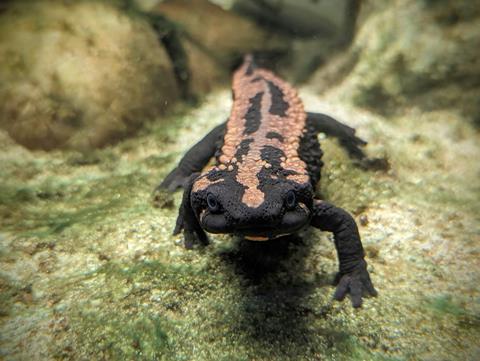Pupils will be able to get up-close to a range of different species in London Zoo’s new exhibit the Secret Life of Reptiles and Amphibians.

Home to some of the planet’s most fascinating yet threatened species – including one of the world’s largest frogs, jewel-coloured geckos, and turtles with heads so big they cannot fit in their shells - the exhibit is said to introduce children to some of the world’s weirdest creatures.
Greeted by a wall-climbing gecko statue upon entering, school children will first get a glimpse into the zoo’s specialist breeding and animal care areas, with the ‘behind-the-scenes’ bought to the fore in the new space.
As well as putting the zookeepers on show, Secret Life of Reptiles and Amphibians will shine a spotlight on London Zoo’s global conservation efforts for the species they care for - as part of ZSL, a science-driven conservation charity.

The exhibit is free to enter inside the park, with schools able to also book additional educational workshops to support their learning. Educational resources can be downloaded to support the visit and teachers can make use of dedicated facilities on the day of the trip.
The new exhibit has been specially designed to meet every need of its inhabitants – with each of its 33 species having individual, and very precise, requirements for temperature, humidity, water quality and lighting.
The custom-built facility features 11 different climate-controlled zones, more than 50 aquatic systems, and the zoo’s specialist horticulture team have carefully planted each habitat to provide shade, egg laying sites, basking locations and camouflage areas for the very particular residents.
What to look out for inside Secret Life of Reptiles and Amphibians
Visitors will come nose-to-nose with one of the world’s largest and most threatened frogs – as the breeding group of critically endangered mountain chicken frogs at London Zoo will be visible for the first time.
The enormous frogs were once widespread across the Caribbean until a killer fungus was introduced to their habitat. In 2009, conservationists from London Zoo and other zoos airlifted the last few mountain chicken frogs to safety in a last-ditch attempt to save the species from extinction, a special unit was built and a breeding programme for the animals was established – but until now both the frogs and the incredible work being done behind the scenes to save them has been unseen by the conservation Zoo’s visitors.

The zoo’s 1.9m-long Philippine crocodile may be spotted basking on the banks of, or swimming in, its 30,000-litre pool, while younger pupils can board a boat like the ones used by researchers to study the crocs in the wild.
The army of mossy frogs will test even the most ardent of ‘Where’s Wally’?’ fans, as they demonstrate their unparalleled camouflage skills in their leafy home, in contrast to the turquoise gecko, who well and truly stands out from the crowd with its electric-blue skin.
Mangshan vipers and a striking King Cobra have tree trunks to coil around and leaves to shelter beneath, while the big-headed turtles will be keeping an eye on it all – because as their name suggests, their shells provide no shelter for their supersized skulls.
For more information about school trips to London Zoo, www.londonzoo.org/education.










